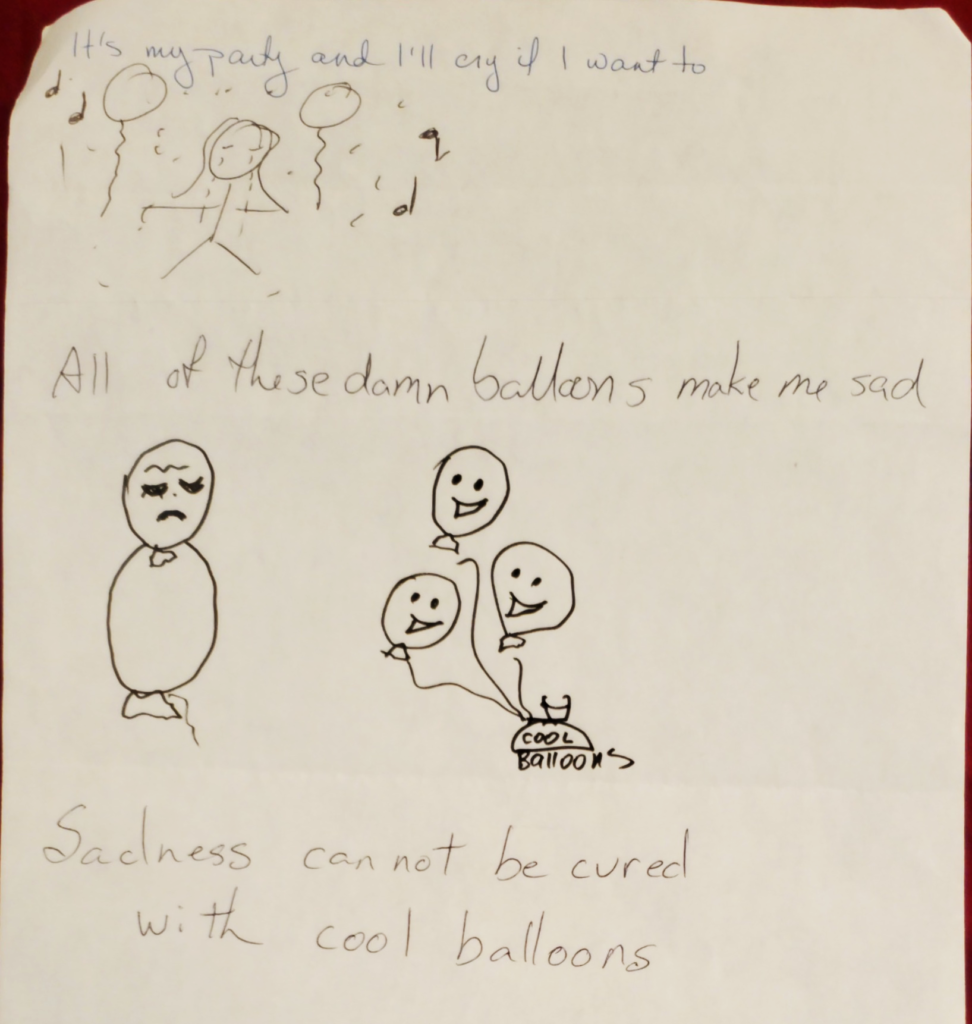Something I’ve noticed about Portkey.
I’m talking about this variation:
You take turns speaking in the present tense, describing a real location from your past, based on an object. If you threw me “wheel” I might say ” ‘Wheel’ takes me to my bedroom when I was 4 and my brother was 16. There are two beds, only a little shorter than I am. I’m pulling on mine to try to get it next to Mike’s. One wall is a neutral blue, with rectangles fading into and out of it – a mural Mike painted. The other wall has paintings he did, a three of spades with a magic wand. The room is smelling like fresh cold air coming in from the window. The metal from the bedframe is cold and hurts my hands as I pull.” Then someone takes an object from my description and takes their turn.
The two notes I give most often, if I am coaching at all (and I often don’t, and just let it go where it goes) are “Stay in the present tense – just be there and describe your surroundings” or “You are moving into storytelling – try not to – just tell us what you are seeing, hearing, smelling”
That isn’t exactly the variation in the book – but it will be in the next edition!
Most storytelling games that I know favor extroverts. This variation of Portkey is the opposite. It doesn’t have that social pressure of “Tell me a story!” Nobody is doing voices. Nobody is trying to be entertaining. We actually tell players to stop storytelling if they start. The extroverts find that a challenge. The introverts, having spent a lifetime of quietly observing, can close their eyes and tell us what they see.
Of course, one amazing thing about this game is we reveal quite a lot about ourselves by what we notice, and you get to know each other a lot better than hearing Joe tell his “The time I got busted in a Pachinko parlor in Singapore” story for his hundredth time.
I never noticed the thing about the introversion/extroversion until the last time I facilitated it. What do you think?
